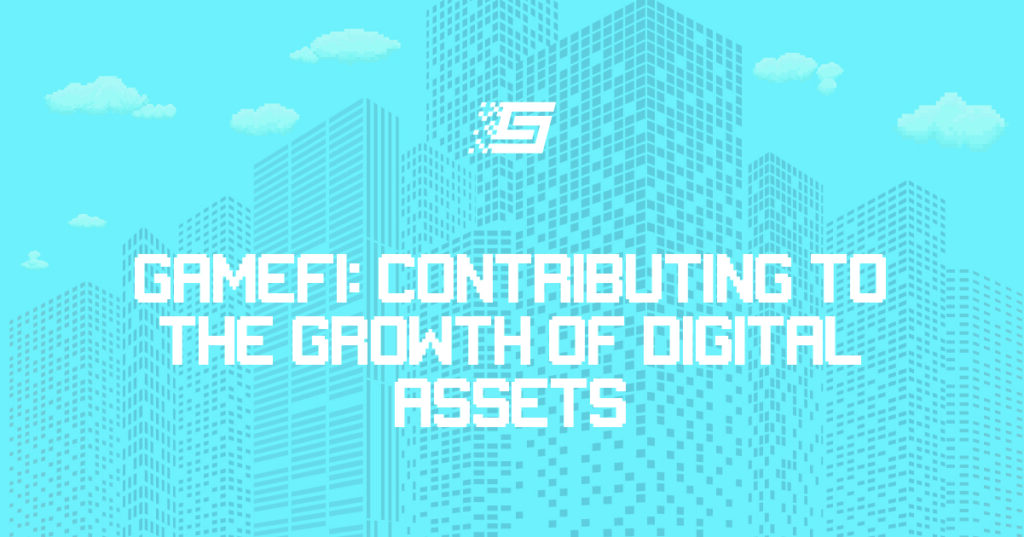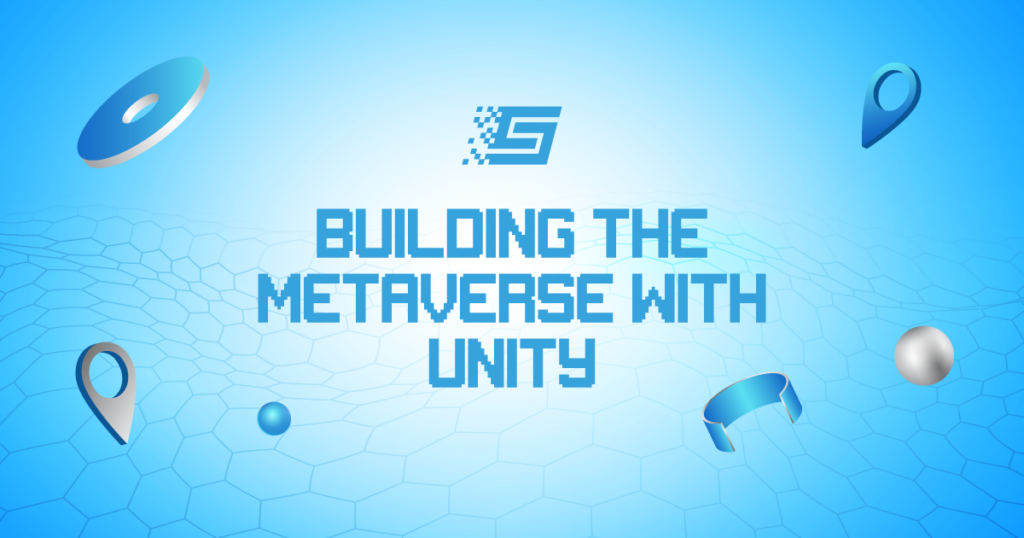
GameFi: Contributing To The Growth Of Digital Assets
The crypto industry has grown significantly over the past few years, and one of its main drivers is the GameFi industry.
GameFi — a portmanteau of gaming and finance — enables gamers to collect rewards while playing.
This market has been growing steadily and currently has a token market cap of around $9.2 billion. Notably, GameFi networks have continued thriving despite the crypto winter. The industry is projected to reach a $74.2 billion valuation by the year 2031.
How GameFi Networks Work
The GameFi ecosystems are based on blockchain technology and utilize different in-game economic setups in order to reward players. The prizes are usually in the form of NFTs (non-fungible tokens) that are tradable on major marketplaces. The items can be in the form of virtual land, costumes, weapons, etc., all of which are instrumental in diversifying user experiences.
The differences in gaming strategies and economic setup is what makes each game unique.
The play-to-earn (P2E) model is one of the most common GameFi economic setups, designed to keep users engaged while allowing them to earn rewards. It allows the players to indulge in games without spending any money. Progress in the games can be curtailed due to a lack of assets that are needed to compete successfully. As such, players are often compelled to purchase in-game items so they can advance to top levels and obtain bigger rewards.
Popular blockchain gaming networks that use the P2E GameFi model include The Sandbox, Decentraland, Gala, and Axie Infinity.
Why GameFi Is Popular
GameFi has attracted millions of users over the past few years, which is impressive considering that this industry was practically non-existent before 2015.
The industry now attracts over 800,000 daily players, many of whom are drawn to GameFi because of the medley of benefits it provides. One of these is the ease of trading digital assets. A recent report published by CoinMarketCap found that around 75% of gamers are willing to trade their in-game assets for some form of digital currency. This advantage is one of the major reasons why GameFi is so attractive to players.
Certain virtual assets, such as land, can also be rented out to others. Users who want to generate passive income without playing games can indulge in liquidity mining by staking virtual assets. This is a big incentive for retail investors and anyone who wishes to monetize their gaming time.
A further merit that GameFi players appreciate is low transaction costs. GameFi environments often utilize cryptocurrencies, which makes fund transfers cheap and relatively easy to execute.
This is a massive bonus when compared to conventional money transfer systems, which are expensive, especially when making cross-border payments.
Another interesting element that captivates many GameFi players is the support for user-generated content, which not only allows these platforms to engage users with different tastes but also promotes creativity among the players while propagating an autonomous environment where assets can be created, listed, and traded publicly.
These distinctive advantages, as well as various other auxiliary factors, contribute to the consistent growth of the GameFi industry.
How GameFi Boosts Growth
GameFi projects mainly use cryptocurrencies to settle transactions, which has contributed to the increased adoption of digital currencies that we have seen in recent years.
The GameFi world has also contributed immensely to the growth of the NFT industry. GameFi relies heavily on these tokens for in-game assets, which increases their use on the blockchain. The rise of the GameFi market coincided strongly with the NFT boom in 2021; GameFi NFT sales rose to $5.17 billion, up from $82 million in 2020. These sales figures helped to solidify the growth of the NFT market in a big way.
GameFi Is Attracting More Investors & Gaming Companies
Many investors are injecting funds into promising GameFi projects. The development will surely help the blockchain industry to have greater credence in mainstream markets as a viable investment space.
Gaming powerhouses such as Ubisoft are making moves to conquer the GameFi frontier. In early 2022, the gaming firm announced that it is forming a partnership with Hedera and the HBAR Foundation to come up with new web3 GameFi games for the brand. This gaming behemoth is behind the Rainbow Six and Far Cry franchises.
Another renowned game developer, Zynga, also announced plans at the start of the year to unveil its own NFT-based games. In the statement, the mobile gaming giant said it was working toward building a blockchain team and forming alliances with accomplished blockchain partners to bring to life its own collection of NFT games.
Several mainstream tech conglomerates such as Tencent, the Chinese technology company, have also begun investing in the GameFi sector. The company has recently been named as one of the top contributors in Immutable’s $200 million fundraising event. Immutable has developed the popular NFT games Guild of Guardians and Gods Unchained.
The entry of such players indicates the increased competitiveness for a share of the space. This is likely to drive up GameFi investments and spur innovation over the long term.
Some Of The Challenges The GameFi Industry Is Facing
With the GameFi sector attracting hordes of players, investors and gaming companies, there are still several significant issues to overcome before it can capture a sizable piece of the overall gaming industry.
Security Issues
The GameFi market has experienced some serious hacks in the recent past that have likely had a negative impact on user sentiment in the sector.
The Ronin bridge hack attack earlier this year caused Axie Infinity players to lose over $600 million in crypto. More recently, a newly launched web3 game called Dragoma suffered a rug pull, causing users to lose $3.5 million.
Poor Gaming Experience
Blockchain-based games still suffer from various playability issues. While they allow players to control and transfer in-game assets, graphics, immersion and gameplay are often lagging far behind their mainstream competitors.
Many blockchain games are lacking game mechanics beyond “grinding” — i.e., completing repetitive tasks in order to be rewarded with assets.
Complaints from players show that the appeal of blockchain-based tokens is not everything and that gamers still value the vivid experiences offered by mainstream games over the benefits provided by GameFi.
Uncertain Regulations
Many GameFi platforms are operating in a regulatory gray area and will likely face major headwinds in the next couple of years. The United States Securities and Exchange Commission (SEC) is currently considering whether to classify blockchain gaming tokens as securities because of the “expectation of profit.”
Classifying them in this way would bring them under the purview of regulatory authorities and oblige many GameFi platforms to make disclosures about their clients and revenue models. The networks that fail to meet these requirements are usually forced to bar investors and players from joining their platforms in order to avoid fines and sanctions, which can, in turn, undercut the growth of the sector.
Technical Complexities
Novel blockchain concepts generally experience a myriad of teething problems. The decentralized finance sector has experienced many of these problems because many users find the platforms hard to understand and use.
GameFi is experiencing some of the same issues. Buying and selling of NFTs, for example, can be a complex affair and remains a major hurdle for many newcomers.
The Sector Is Bound To The Wider Crypto Market
GameFi, being a subset of the crypto industry, is therefore affected by the booms and busts of the digital currency market. This means the GameFi sector experiences a rise in activity during uptrends, and the opposite when there is a downtrend.
To maintain the interest in GameFi platforms, developers face an uphill task of developing enthralling games in order to help ecosystems weather market slides.
GameFi investors are currently focused on improving gaming experiences in order to build on sustainability, but the task is easier said than done.
Developers face many such challenges, but if they can attract players with top-tier gameplay, the future for blockchain-based gaming looks bright.


